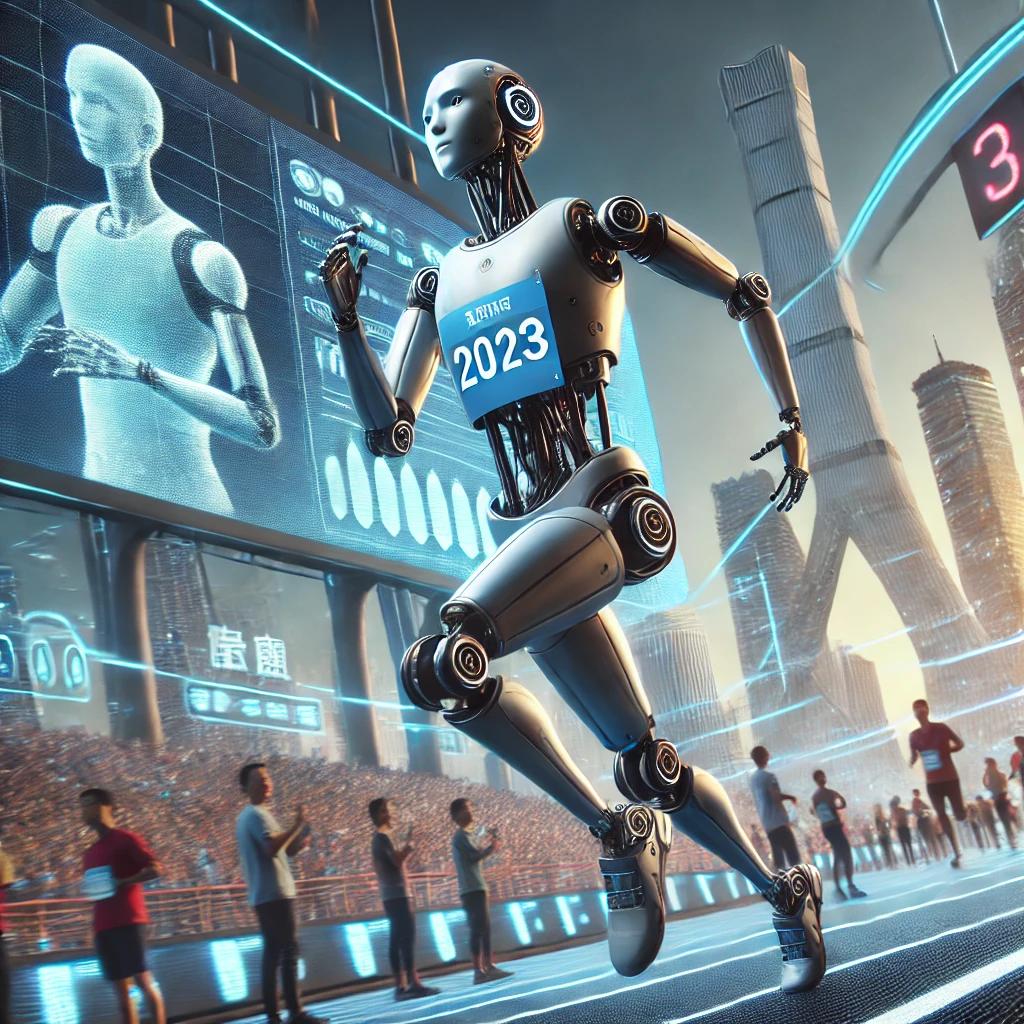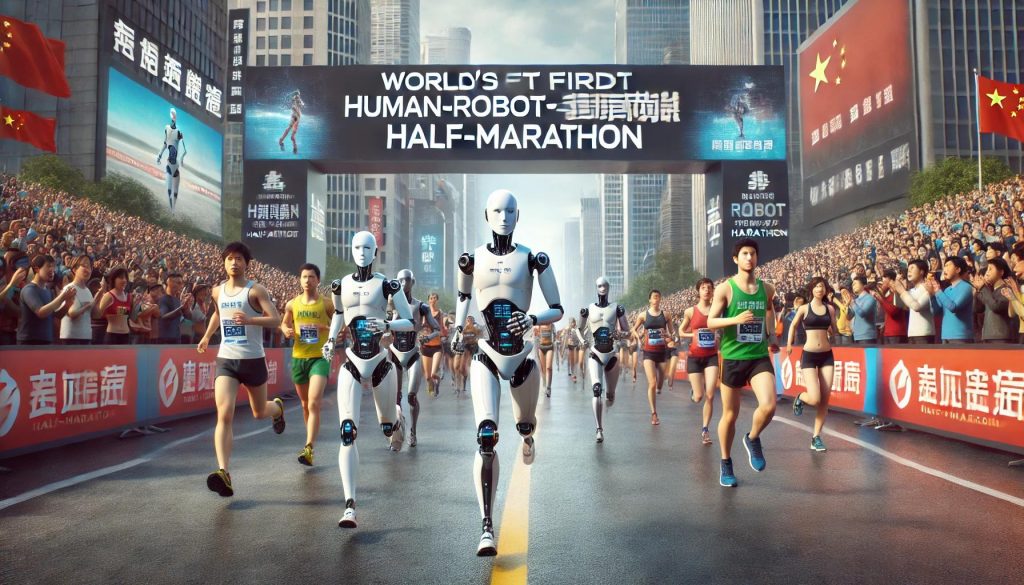A New Era in Athletics Is About to BeginIn a bold and exciting move, China is set to host the world’s first human-robot half-marathon on April 13, 2025. This pioneering event will take place in Beijing’s Economic-Technological Development Area. Notably, it will feature both humans and humanoid robots, racing side by side—though in clearly separated lanes (China Daily).
Consequently, this event marks a historic step forward in blending sports with advanced technology. It also aims to generate public excitement around humanoid robotics, a field that is rapidly evolving.
Race Format and Entry Requirements
At the core of this event is a 21-kilometer course, with a strict 3.5-hour time limit for both humans and robots. Importantly, all robot participants must have a bipedal, humanoid design. In other words, robots with wheels or non-human shapes are disqualified.
Furthermore, the marathon allows both remote-controlled and fully autonomous robots. This inclusion broadens the playing field and encourages a variety of innovations.
However, since humanoid robots still have physical limitations, race officials will allow battery changes or robot swaps. That said, each change will come with a 10-minute time penalty (Business Insider).
Prizes and Special Awards
Not only is this event about pushing technological boundaries, but it also offers a competitive incentive. The top three finishers—whether human or robot—will receive the following cash prizes:
- 🥇 1st Place: 5,000 yuan
- 🥈 2nd Place: 4,000 yuan
- 🥉 3rd Place: 3,000 yuan
Additionally, there will be special awards for categories like “Best Endurance”, “Most Creative Design”, and “Most Innovative Tech”. These extra honors aim to celebrate not just speed but also robotic engineering and creativity (Xinhua News).
Robots Are Already in Training
Meanwhile, preparation for the race is already well underway. For example, the Tiangong Ultra robot is now running at speeds of 12 km/h, a notable feat for a bipedal machine. At the same time, robots like PM01 are showcasing advanced agility—performing quick stops and even backflips (VN Express).
Clearly, these robots are more than mechanical curiosities—they are being designed for real-world, high-performance tasks (VN Express – Robot Training).

Why This Event Really Matters
Beyond the spectacle, this marathon has deep implications. First and foremost, it represents a fusion of sports and science. By placing robots in a traditionally human arena, the event encourages people to think differently about the role of machines in our daily lives.
Moreover, the race is a step toward building public trust and interest in robotics. It also has the potential to accelerate research and commercial investment in humanoid AI (China Daily).
Global Collaboration and Open Participation
What makes this marathon even more exciting is its global reach. The event is open to robot companies, universities, research centers, and developer clubs from around the world. As a result, it creates a shared stage for innovation.
In fact, this aligns with China’s larger goal: becoming a global leader in humanoid robotics. As stated in recent reports, the country is determined to make humanoid robots more integrated into industries and everyday life (Wall Street Journal).
Looking Ahead: A Glimpse into the Future
All things considered, the human-robot half-marathon is more than just a race—it’s a vision of the future. It combines entertainment, innovation, and global collaboration into a single, unforgettable event.
As robots and humans race together for the first time, this could redefine how we view athleticism, robotics, and human-machine partnerships in society.


